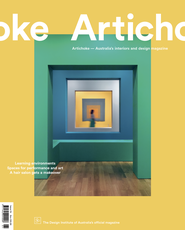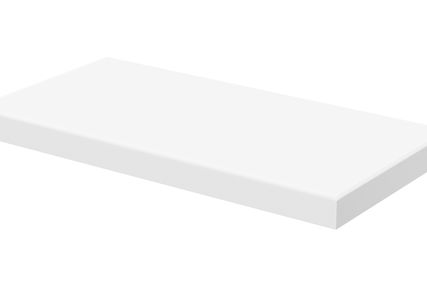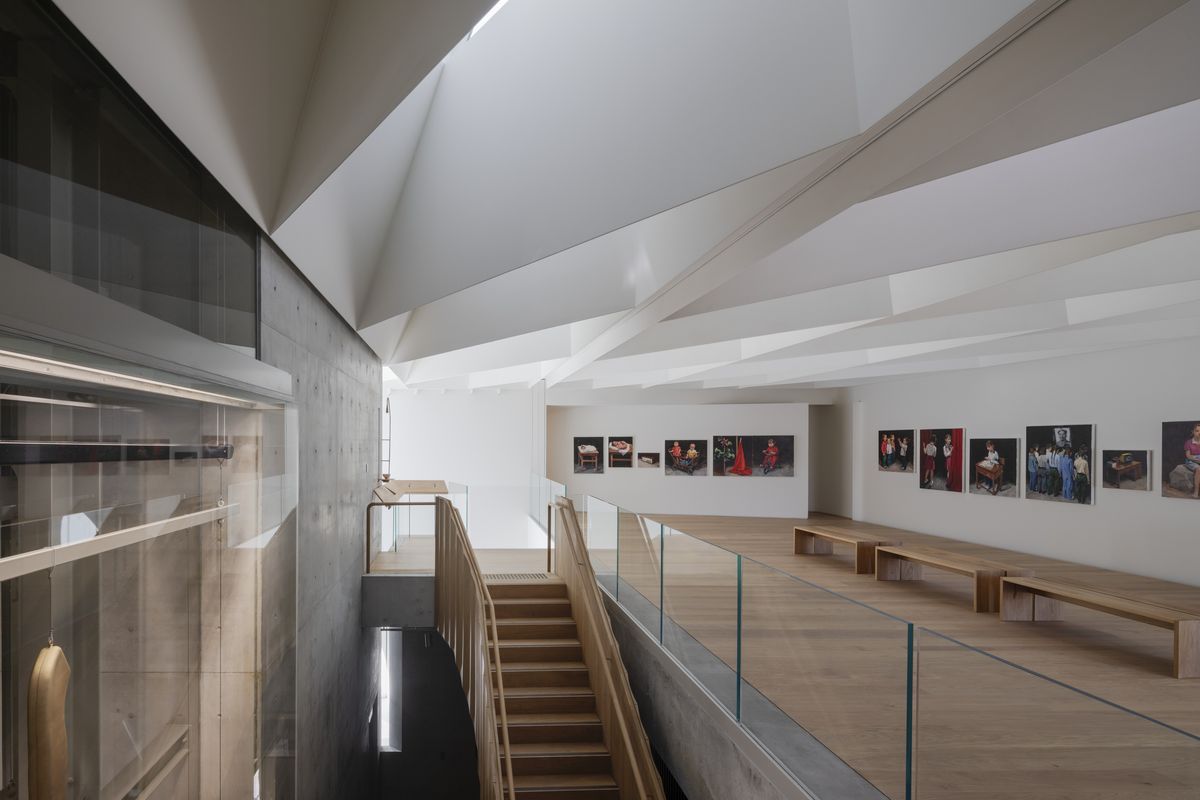When receiving the 2020 Australian Institute of Architects Emil Sodersten Award, the highest accolade for interior architecture in any given year, the two architecture practices that authored this project – Durbach Block Jaggers and John Wardle Architects – defined their collaborative design process as one based on a kind of humorous improvisational exchange.
Standing before Phoenix, the astonishing new arts facility for impresario Judith Neilson, it seems that those exchanges are also evident in the play of form and fenestration across the facade. We cannot help but see them as a series of good natured jostling riffs, on both the standards and the inventions of the other.
The philosophy of humour is an interesting one; Immanuel Kant conflated the characteristics of humour, music and games of chance to detect an experience he defined as pleasure in the shifting of ideas of the mind. Arthur Schopenhauer refined this observation to characterize humour as the momentary disparity between an abstract idea and real things, or between expectation and experience.
The performance space is a singular bell-shaped clearing, made by stepped and contoured timber ribs.
Image: Julia Charles
Exploring the interiors of Phoenix with Neil Durbach and, later, conversing with John Wardle, it is readily apparent that both have an affinity for the use of strategic incongruity to generate that immediate and compelling joy felt when confronted with the unexpected.
Poche in a contemporary architectural sense evokes the tension within a surface to mediate between the public realm beyond, and the interior world within, a building. It is a rich ground for architectural invention; some might even say it is the essential act of architecture, being both the manner by which space is defined and form made.
Inherent within the premise of this project is a citadel urban condition in which the solidity of the street wall is essential for security. The adroit early decision by the architects to share a single defining external material enabled each practice free hand to engage with radical poche via divergent formal manipulation.
A rectilinear balcony projects into the performance space, juxtaposed against a curvilinear overscaled brass reveal.
Image: Anthony Browell
The curved and canted forms that masque the performance space by Durbach Block Jaggers engage niches and window reveals in a manner that is in conversation with both Le Corbusier and the wider use of poche with the canon. These spaces manifest as the most delightful fire egress we have experienced, as the magical cloud window improbably levitating behind the lift shaft as a frieze, and as the splay window at street level that is somehow both deep and all surface, obscuring as much as it reveals.
For the John Wardle Architects-designed gallery space, it is the manner of the distinctive facade that most characteristically riffs on the tradition. Wardle describes the brick screen as draped over the structure like a cloth draped over an object. This masque can be seen in the cornice, where the upper gallery skylights manifest as twisting crenellations; or in the unifying gesture of the intersecting circular window, on axis with Central Park Avenue, that belies the complexity of the interior.
Prominent moments of containment and release in the gallery, designed by JWA, are set around circular windows.
Image: Martin Mischkulnig
The single processional entrance to the complex leads into an external antechamber. This space, both court and garden, is part domed and otherwise open to the sky. Containing a sublime moss garden and a single tree, the space feels supported by a seat of massive cut-stone boulders that appear to levitate above the brick ground.
To the left of the antechamber is the Gallery. The spatial arrangement eschews a “white box” flexible strategy to establish an ecosystem of different-sized spaces. Wardle describes 14 different galleries within the small footprint. There is amazing spatial variation, from the massive to those only 800 millimetres wide: space enough for a single person in quiet contemplation of a single work.
The interior spatial character is further enlivened via the voids that variously entwine the vertical circulation to establish a Piranesi-like connection between levels. At these edges are a series of reaching pulpits, carving delightful anthropometric spaces within the collective.
Cast with walls of concrete painstakingly made on site, Phoenix comprises a complex stack of differing volumes interconnected by stairs and bridges.
Image: Martin Mischkulnig
On the topmost floor, a dynamic sculptural white skylight baffle infuses the open space with what Wardle has termed “fuzzy light,” indistinct but enveloping, gentle but intense. The light drops through the voids to animate the robust and serene spaces below. Their material character is defined by use of muscular concrete structure as finish, along with refined highlights of sculpted oak, brass and tile.
The interior is animated via an arresting black box space, suspended as an interior within an interior, and further enlivened by various large pivoting/sliding walls that alternately enable the doubling of hanging space and access to the large good lift on each level. The intensification of painting storage/contemplation that is established here evokes the prototypical urban house museum, John Soane’s residence at Lincoln’s Inn Fields.
If from the central antechamber we had instead turned right, we would have entered the upper gallery of the performance space and, from here, descended the gentle perimeter step ramp to the floor of the theatre. The ceiling lifts and drapes like a billowing canopy over this monumental room. This is performance space as theatre in the round; the proscenium is collapsed as in those first purpose-built English theatres such as the Rose and Swan and, before that, the archetypal clearing in the woods.
In the upper gallery, sculpted rostra push out into voids in the JWA-designed galleries.
Image: Martin Mischkulnig
The internalized space is punctuated by an Adalaberto Libera-like projecting balcony that could be utilized as an elevated stage, though the floor is the central focus, with occasional performances also appropriating the perimeter ramp. The transgression of the normative actor/audience spatial relationship brings more overt intimacy and power to spectacle.
How the great interior congregation spaces retain legibility once processional entrance and egress is enabled is one of the fundamental questions of our canon. Gunner Asplund utilized both plan and section at the Stockholm Library to enter from below, arriving at the centre of the great intact circular drum. Le Corbusier did something similar at his church in Firminy via a cleverly inflected floor plate. Durbach Block Jaggers, with a nod to the latter, has inverted this arrangement in both plan and section by employing a perimeter step ramp to encircle and descend into the space. This solution compellingly enables processional legibility while retaining the powerful singularity of the space as a place of stasis.
Around the great central room are intimate alcoves encircled with a cornucopia of delightfully inventive black steel and red velvet upholstered joinery. Below the great central room are places for the performer, a green room and an iridescent lipstick-red stair, along with toilet facilities. These later spaces are like a hall of mirrors; vistas double and dissolve, and we are reminded that we are, as always in the theatre, here to both see and be seen.
An outdoor room at the top of theatre building by DBJ.
Image: Tom Ferguson
At the top of the theatre building is a second outdoor room, a walled and windowed garden open to the sky. Turning to take in the vista, we almost expect to encounter the fireplace of the Beistegui Apartment. The surreal play of inside and out, along with the ever formally inventive fenestration and joinery, is skilfully composed to result in a space of serene beauty.
The premise of this project is the sophisticated and luxurious interweaving of the arts, of life and gardens. In this sense it is perhaps as was in fourteenth-century Generalife, or even the stately pleasure-dome of Kubla Khan in Xanadu.
However, in testament to the architects’ collaboration, the project eclipses this ambitious premise. In the manner of miraculous flights of comedic improvisation, here based on erudition and design agility, each design enhances the other. The result is incongruity that is compelling, astonishing and entirely about the canon – because great works of any art form bring into question the basic tenets of the discipline.
Credits
- Project
- Phoenix Central Park
- Architect
- Durbach Block Jaggers Architects
Sydney, NSW, Australia
- Project Team
- Durbach Block Jaggers: Neil Durbach, Camilla Block, David Jaggers, Simon Stead, Anne Kristin Risnes, Deborah Hodge, Xiaoxiao Cai, Adam Hoh, John Wardle Architects: John Wardle, Stefan Mee, Diego Bekinschtein, Alex Peck, Luca Vezzosi, Adrian Bonaventura, David Ha, Ellen Chen, Andrew Wong, Manuel Canestrini, Meron Tierney
- Architect
- Wardle
Melbourne, Vic, Australia
- Consultants
-
Acoustic consultant
Marshall Day Acoustics
Building services engineer Evolved Engineering
Building surveyor and accessibility consultant Philip Chun & Associates
Early works and superstructure Bellevarde
Facade engineer Inhabit
Fire engineer Affinity Fire Engineering
Geotechnical engineer Pells Sullivan Meynink
Landscape architect 360 Degrees Landscape Architects
Lighting design Bluebottle
Planner Mersonn
Project manager Aver (2015–2017), Colliers (2017–2019)
Signage and wayfinding Studio Ongarato
Structural and civil engineer TTW
Structure and fitout FDC Building Services
Traffic and pedestrian modelling GTA Consultants
- Aboriginal Nation
- Phoenix Central Park is built on the land of the Gadigal people of the Eora nation.
- Site Details
-
Location
Chippendale,
Sydney,
NSW,
Australia
Site type Urban
- Project Details
-
Status
Built
Completion date 2019
Category Commercial
Type Culture / arts
Source

Project
Published online: 17 Nov 2021
Words:
Andrew Scott,
Anita Panov
Images:
Anthony Browell,
Julia Charles,
Martin Mischkulnig,
Tom Ferguson,
Trevor Mein
Issue
Artichoke, March 2021

































